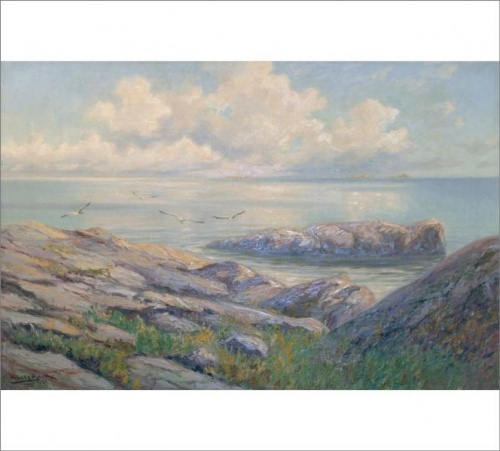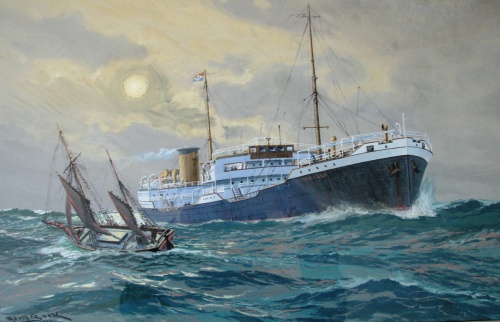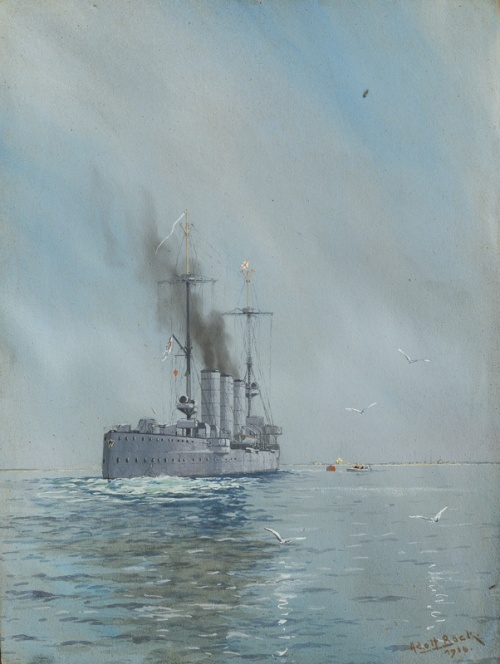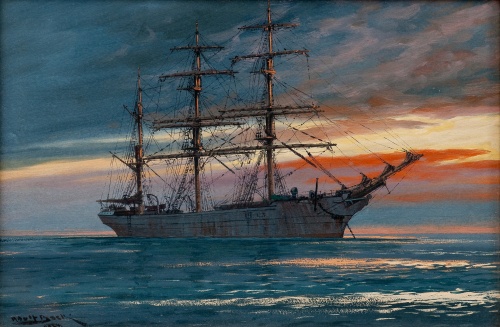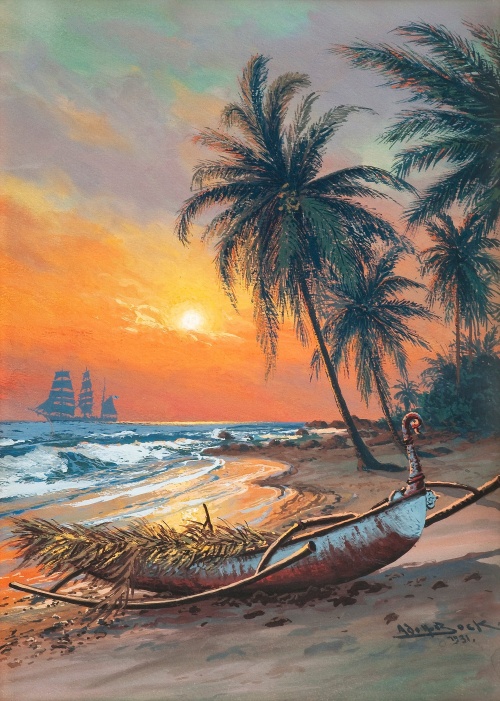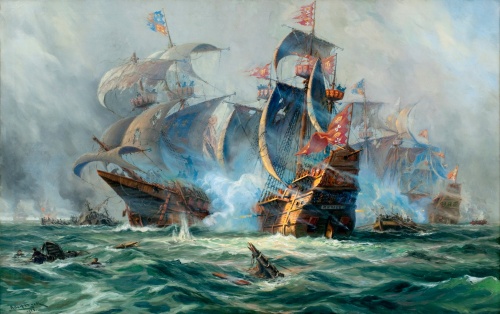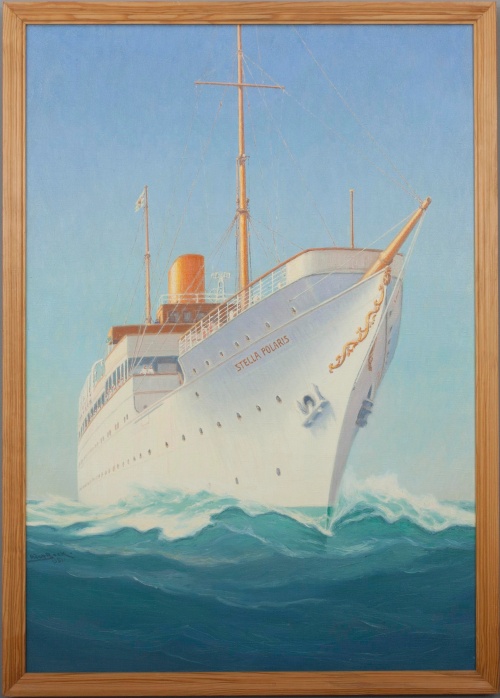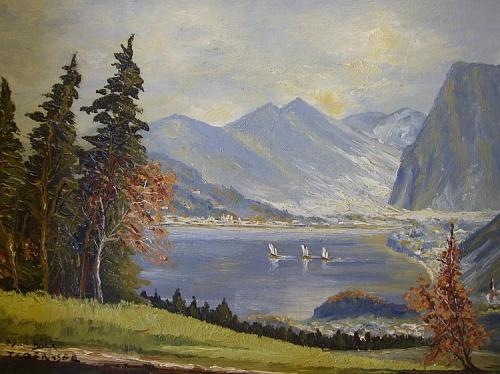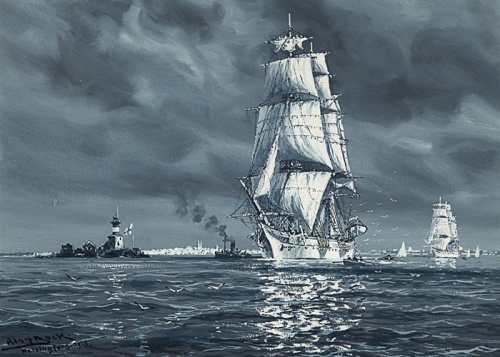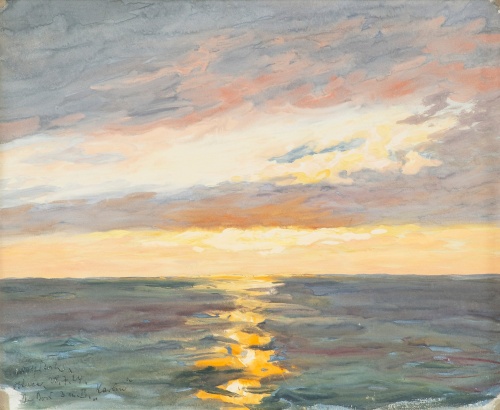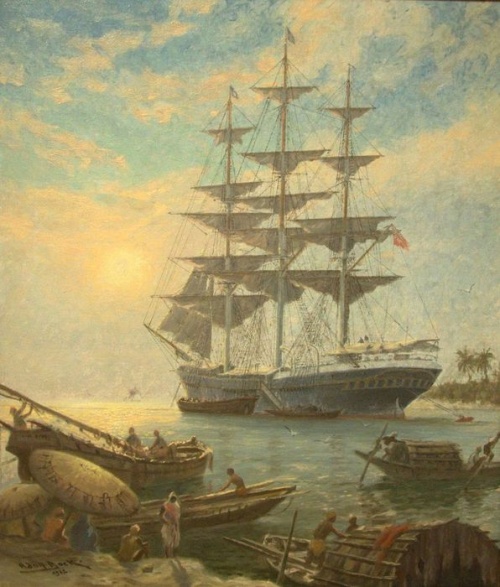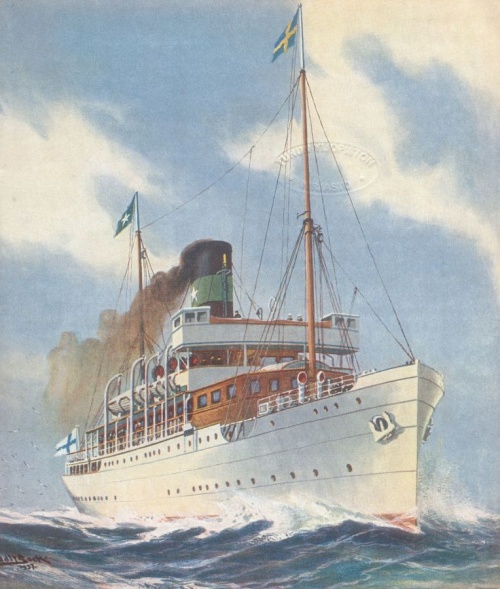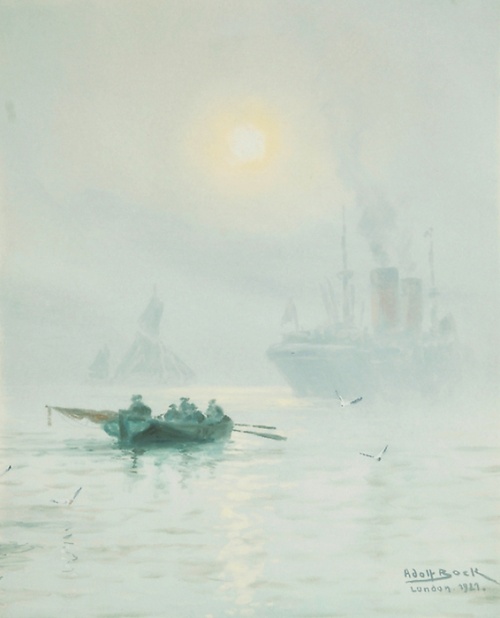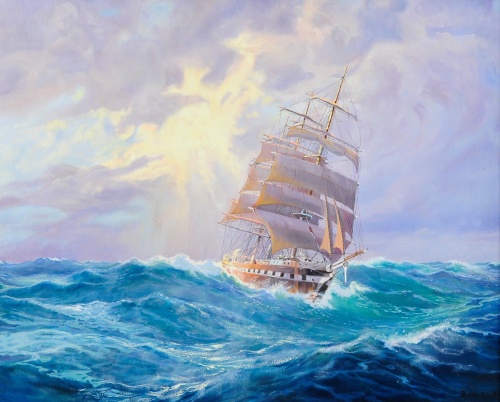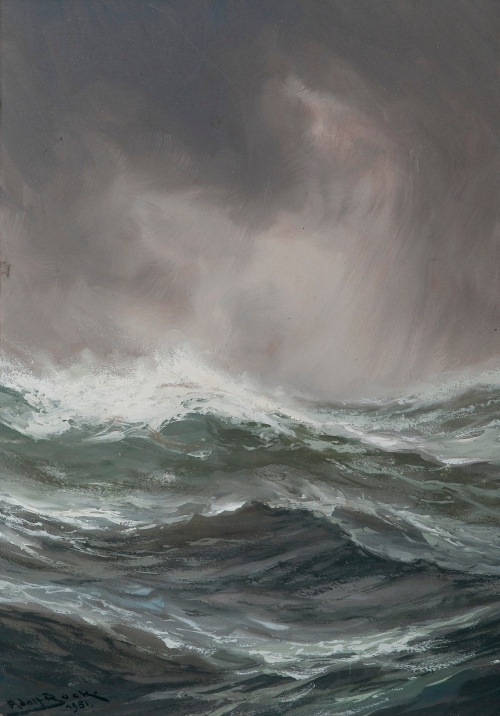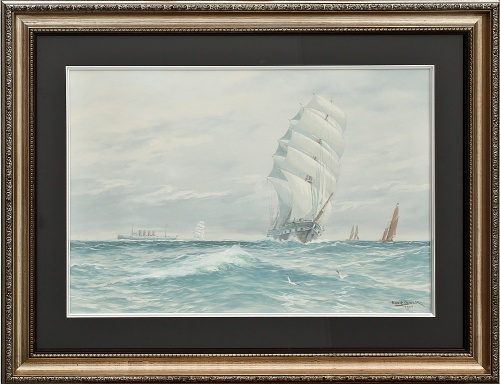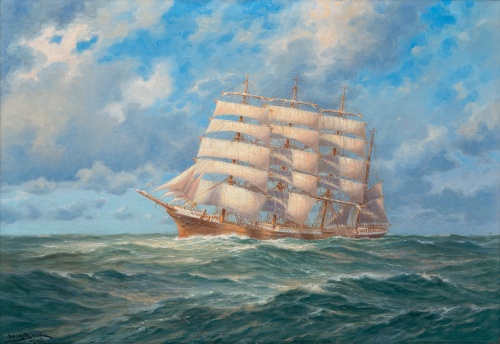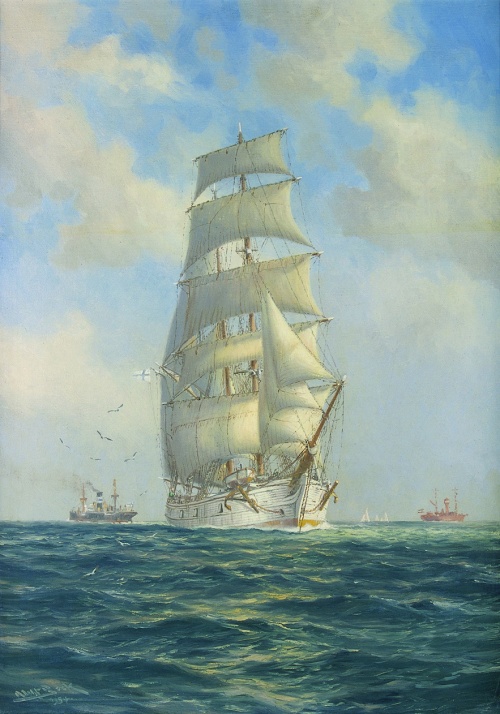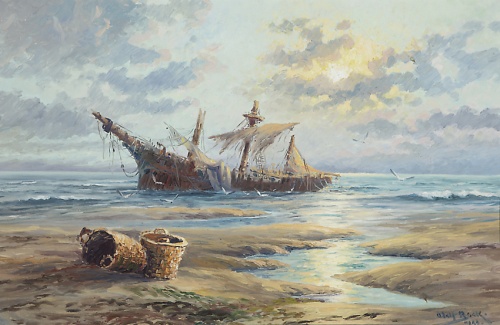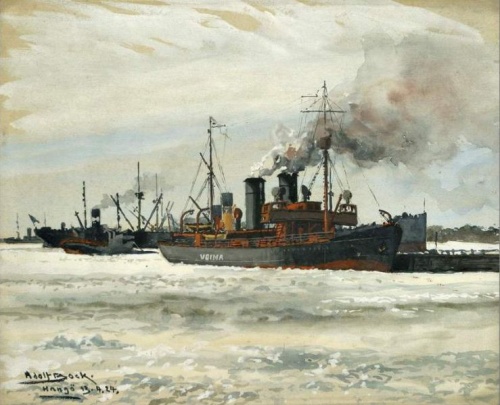Works by the artist Adolf Bock (1890 - 1968) (42 works)
Разрешение картинок от 499x350px до 5504x3604px
Adolf Konrad Walter Bock (German: Adolf Konrad Walter Bock, born August 5, 1890, Berlin - died January 13, 1968, Helsingborg) - German marine painter.
Like some other famous German marine painters (Hans Bordt, Willy Stöwer, Robert Schmidt-Hamburg), A. Bock mastered painting mainly as a self-taught artist. His grandfather was a landscape painter, his father was engaged in agriculture and was an amateur artist. Supported by his father, Adolf begins to develop as a talented draftsman even in childhood. Three times the young man began to study painting professionally, but all three times he abandoned his studies. In 1910, A. Bock was recruited for 4 years into the German Navy. In 1912, as a sailor, he accompanies Emperor Wilhelm II on his voyage to the Mediterranean Sea. The Kaiser noticed A. Bock's artistic talent and supported him.
A. Bock lived and painted in Germany, Sweden and Finland. In 1919, he moved to Finland to study and learn how to depict various natural and weather phenomena here. In the period between the two world wars, the artist also carried out orders for various shipping companies, publishing houses and magazines, and worked as an illustrator. Thus, for 17 years he has served as an artist, illustrator and author for the Danish-Swedish weekly magazine Familie Journal, on whose assignment he travels around the world.
After the National Socialists came to power in Germany, the work of A. Bock was highly valued. He was the author of a number of propaganda works, including Warsaw, Paris, London: A Picture Map for the Use of Our Combat Aviation (Warschau, Paris, London: Eine Bildmappe vom Einsatz unserer Luftwaffe Berlin 1940), Fighting under the Battle Flag: A Picture Map for Use our navy (Kampf unter der Kriegsflagge: Eine Bildmappe von Einsatz unserer Kriegsmarine Berlin 1943.). On January 30, 1944, A. Bock was personally awarded the professorship by A. Hitler. This was the only assignment of its kind during the entire Second World War. It is also known that during personal conversations and table conversations in a close circle of those close to him, A. Hitler spoke with great approval of the work of A. Bock.
On January 30, 1945, the artist, as a passenger, was on board the German liner Wilhelm Gustloff, sunk by Soviet submariners, but managed to escape. He later describes in detail the events of this day in his book “The Drowning of Wilhelm Gustloff” (Die Versenkung der Wilhelm Gustloff). In 1950, A. Bock created three engravings on this topic.


